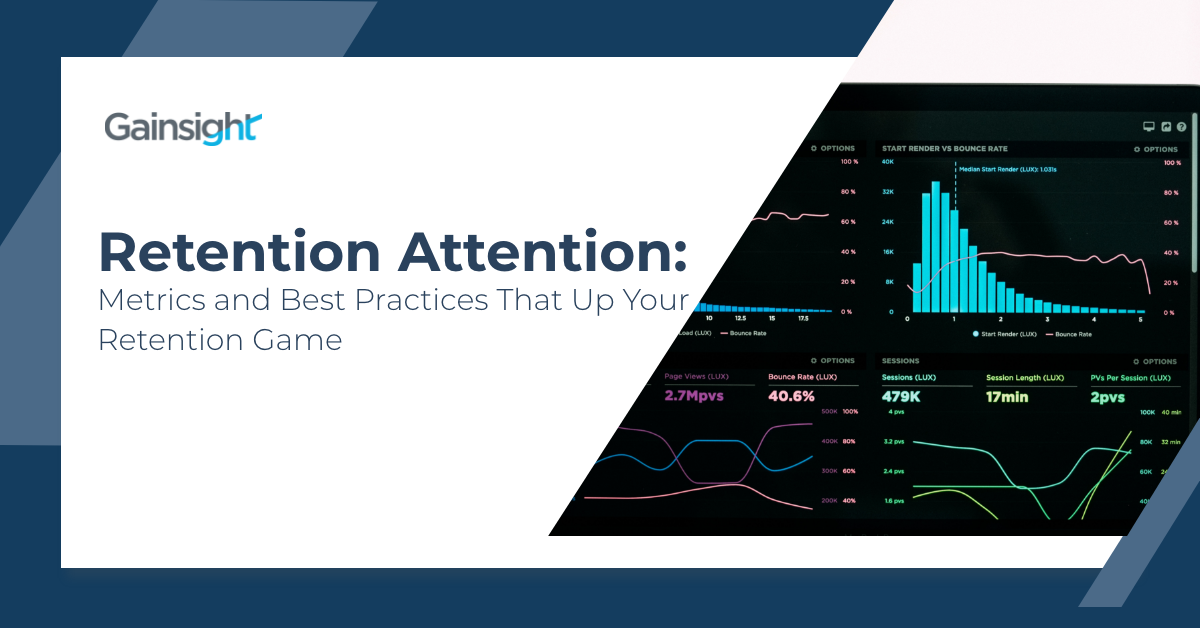Does RETENTION have your attention? Businesses in most fields or industries are interested in retention, primarily due to the current economic climate. Companies realize that no matter how much new logo business flows in at the top of the funnel, there will never be enough to sustain real growth. Why? Without retention, you have a hole in your bucket, and your customers are churning out.
In a recent KeyBanc Capital Markets (KBCM) survey, median churn rates increased from 12.5 to 13.9 percent for private SaaS companies with ARR over $5M in 2020. While the percentage may not seem substantial, these numbers are against increasing new Customer Acquisition Costs (CAC). CAC is the cost you incur by bringing in new customers, such as sales, marketing, salaries, overhead, and onboarding expenses. The average CAC went from $1.35 per new customer in 2019 to $1.60 in 2020. That is an increase of 18.5 percent! The data is a significant indicator that companies need to pay more attention to retention rates and other metrics to survive. If you can leverage all three—new Logo, retention, and upsells—you will be in a better position overall.
What then are some metrics you should know to help monitor retention? We already addressed CAC. Here are three more that are essential metrics to track:
- Churn: Your churn rate, aka Attrition Rate, is the number of customers leaving your business or service against total customers. It can be based on a monthly, quarterly, or yearly rate. Knowing and tracking the churn rate and analyzing why customers churn allows you to be proactive about reducing that number. If you don’t stop churn, it won’t matter how many new customers come in as you won’t realize material growth over time.
- Annual or Monthly Recurring Revenue (ARR/MRR): ARR can also be called annual contract value (ACV). This metric is the annualized amount that customers pay you for your product or service on a recurring basis. When you have the total ARR, you know the value of your installed customer base. It also gives you insight into the shifting value of those customers. Measuring this metric over time provides you with a projection of customer renewals.
- Customer Lifetime Value (CLV): This also has the acronym LTV. CLV is the projected recurring revenue of a customer over the entire time they are your customer. It is typically calculated against a standardized number of years, commonly five to seven. Consider it as an annuity. When you know the CLV of each customer, you know their worth to your business.
With the knowledge of these metrics, you can calculate how much it costs to acquire a new customer and how much it costs to keep an existing one. And just because you focus on retention doesn’t mean you abandon the pursuit of a new Logo. However, you must spend the proper amount driving more customers without ruining your LTV to CAC ratio. You need your customer install base to grow and provide overall value, which can only happen with robust retention rates and positive upsells.
Now that you understand that Retention is the name of the game, there are programs and tactics to increase retention.
- Internal Structure and Collaboration of Teams: Consider examining your segmentation process to determine if your customers are in the right place. Next, do they have CSMs assigned to them that meet their needs? Sometimes there are not enough CSMs for the size of the account. Sometimes it is not the right CSM. Personalities can play a part in the customer relationship as much as education and capabilities can.
- Enable Your Team to Be Successful: Help your CSMs, and any customer-facing teams succeed with the right education, materials, and information. There are varying degrees of education and experience on any team. Consider a standardized education plan when onboarding new team members. Continuity of care can create a better experience for the customer. Also, CSMs need accurate data to be effective in their job. Having the right customer success technology and a single source of truth can make a huge difference.
- Improve Customer Engagement and Experience: While your company may have a predetermined customer journey, with expected touchpoints, playbooks, and methodologies, recognize that customers are humans too. Not everyone is the same. Provide flexibility to your processes to adapt to customer’s changing needs. Also, consider how your communications affect your customer. Just how many emails do you want them to have?
- Increase Time to Value: Creating retention starts with proving your worth to your customer. The faster that happens, the less likely they are to churn. That means getting your customer in your product and adopting fast! Fortunately, if they are already using it, they are genuinely interested in your product. Keep that interest going by engagement or in-app messaging. Inform them of new or unused features and keep them in your product.
- Voice of the Customer (VOC): The VOC should be a primary concern. However, it can be “heard” in several ways. There are Health Score Cards, Net Promoter Scores, and Sentiment Surveys. Furthermore, there is the powerful Customer Advisory Board (CAB) and specific advice about its makeup. They must comprise a diverse cross-section of your customers. You don’t want someone who is a “yes” customer. Instead, you want honesty and to be challenged. In addition, consider Exit Interviews a form of VOC. They can provide unconsidered perspectives or unknown insights.
These pain points can be alleviated with the right technology. Gainsight allows companies comprehensive views into their customer base necessary to drive retention. It creates a single source of truth record system with visibility and metrics that everyone can see in your organization, including your executive team. You can maximize efficiency with Score Cards. Reports & Dashboards keep your teams, processes, and systems aligned. The voice of the customer is always apparent by monitoring usage and feedback in Cockpit. Likewise, deliver proactive value with In-App Engagements and Timeline, which lets you know the customer’s history and future engagements. And when a risk arises, Playbooks let you and your team know exactly how to mitigate that risk. There is also the use of Journey Orchestrator, part of Gainsight CX, which allows you to automate motions, reduce headcount, and improve the cost of retention.
If retention is the name of the game, then you need to be better at it than your competitors. And the best teams use Gainsight. Schedule a personalized demo to see the power of Gainsight in action to level up your retention.

